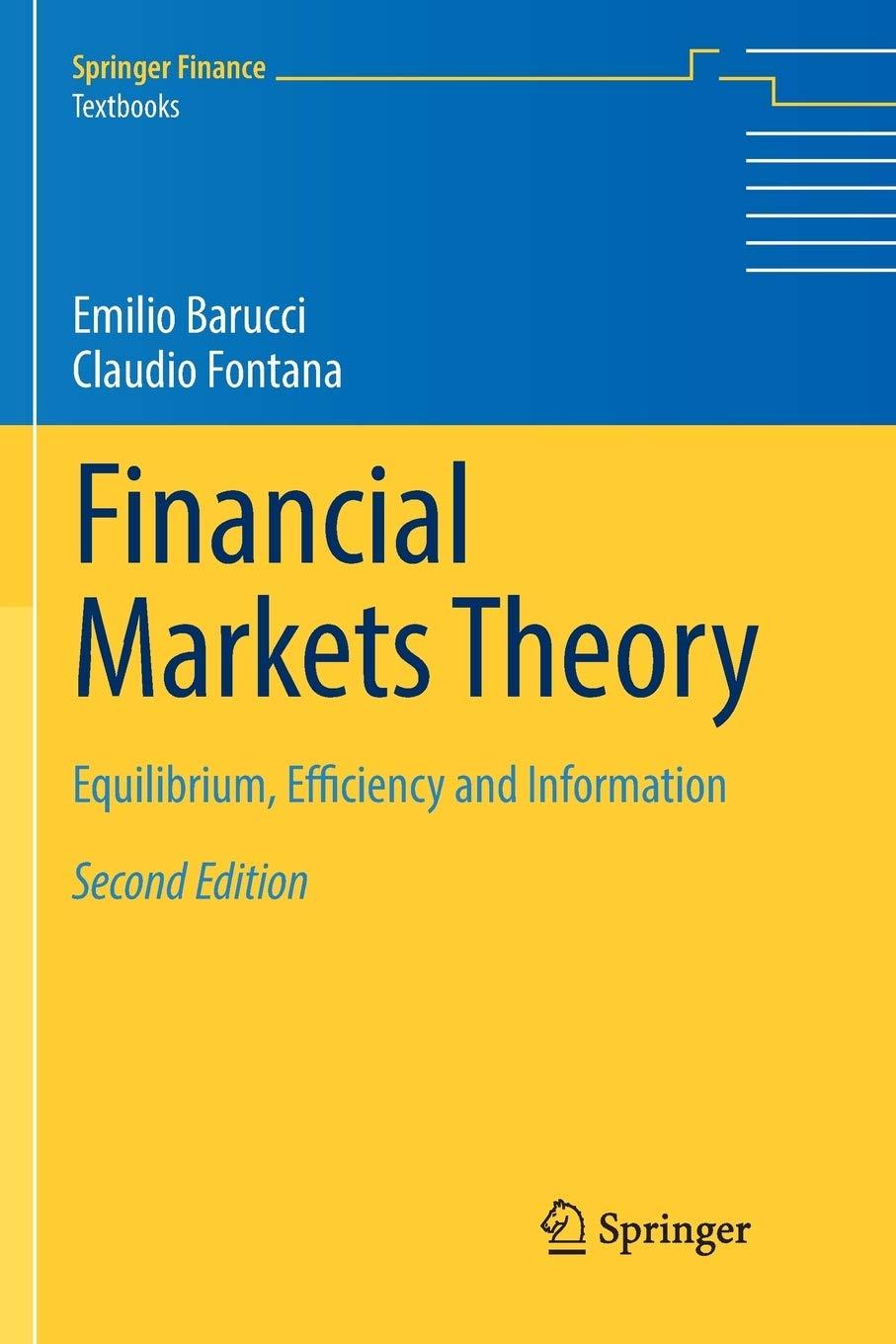In this exercise, we introduce and solve the general equilibrium asset pricing model proposed by Cecchetti et
Question:
In this exercise, we introduce and solve the general equilibrium asset pricing model proposed by Cecchetti et al. [378] with the purpose of showing that negative serial correlation in long horizon stock returns is consistent with an equilibrium model of asset pricing.
Consider an infinitely lived economy (i.e., \(T=\infty\) ) admitting a representative agent with power utility function of the form \(u(x)=x^{1+\gamma} /(1+\gamma)\) and discount factor \(\delta\) and where a single risky security is traded, with price process \(\left(s_{t}\right)_{t \in \mathbb{N}}\) and paying the aggregate endowment as dividend. Assume that the aggregate endowment process \(\left(e_{t}\right)_{t \in \mathbb{N}}\) is modeled as follows:
\[e_{t}=e_{t-1} \mathrm{e}^{\alpha_{0}+\alpha_{1} X_{t-1}+\varepsilon_{t}}, \quad \text { for all } t \in \mathbb{N},\]
where \(\left(\varepsilon_{t}\right)_{t \in \mathbb{N}}\) is a sequence of independent random variables identically distributed according to a normal law with mean zero and variance \(\sigma^{2}\) and where \(\left(X_{t}\right)_{t \in \mathbb{N}}\) is a Markov process with state space \(\{0,1\}\) characterized by the transition probabilities
\[\mathbb{P}\left(X_{t}=1 \mid X_{t-1}=0\right)=1-q \quad \text { and } \quad \mathbb{P}\left(X_{t}=0 \mid X_{t-1}=1\right)=1-p\]
This means that the logarithm of the aggregate endowment process follows a random walk with a stochastic drift, where the process \(\left(X_{t}\right)_{t \in \mathbb{N}}\) is meant to represent the high/low growth state of the economy. The Markov chain \(\left(X_{t}\right)_{t \in \mathbb{N}}\) is assumed to be independent of the sequence \(\left(\varepsilon_{t}\right)_{t \in \mathbb{N}}\).
Show that the equilibrium price \(s_{t}\) is given by
\[s_{t}=\varrho\left(X_{t}\right) e_{t}, \quad \text { for all } t \in \mathbb{N}\]
where the function \(\varrho:\{0,1\} \rightarrow \mathbb{R}\) is defined by
\[\begin{aligned}& \varrho(0):=\tilde{\delta}\left(1-\tilde{\delta} \tilde{\alpha}_{1}(p+q-1)\right) / \Delta, \\& \varrho(1):=\tilde{\delta} \tilde{\alpha}_{1}(1-\tilde{\delta}(p+q-1)) / \Delta,\end{aligned}\]
with
\[\tilde{\delta}:=\delta \mathrm{e}^{\alpha_{0}(1+\gamma)+(1+\gamma)^{2} \sigma^{2} / 2}, \quad \tilde{\alpha}_{1}:=\mathrm{e}^{\alpha_{1}(1+\gamma)}\]
and \[\Delta:=1-\tilde{\delta}\left(p \tilde{\alpha}_{1}+q\right)+\tilde{\delta}^{2} \tilde{\alpha}_{1}(p+q-1) .\]
Step by Step Answer:

Financial Markets Theory Equilibrium Efficiency And Information
ISBN: 9781447174042
2nd Edition
Authors: Emilio Barucci, Claudio Fontana





